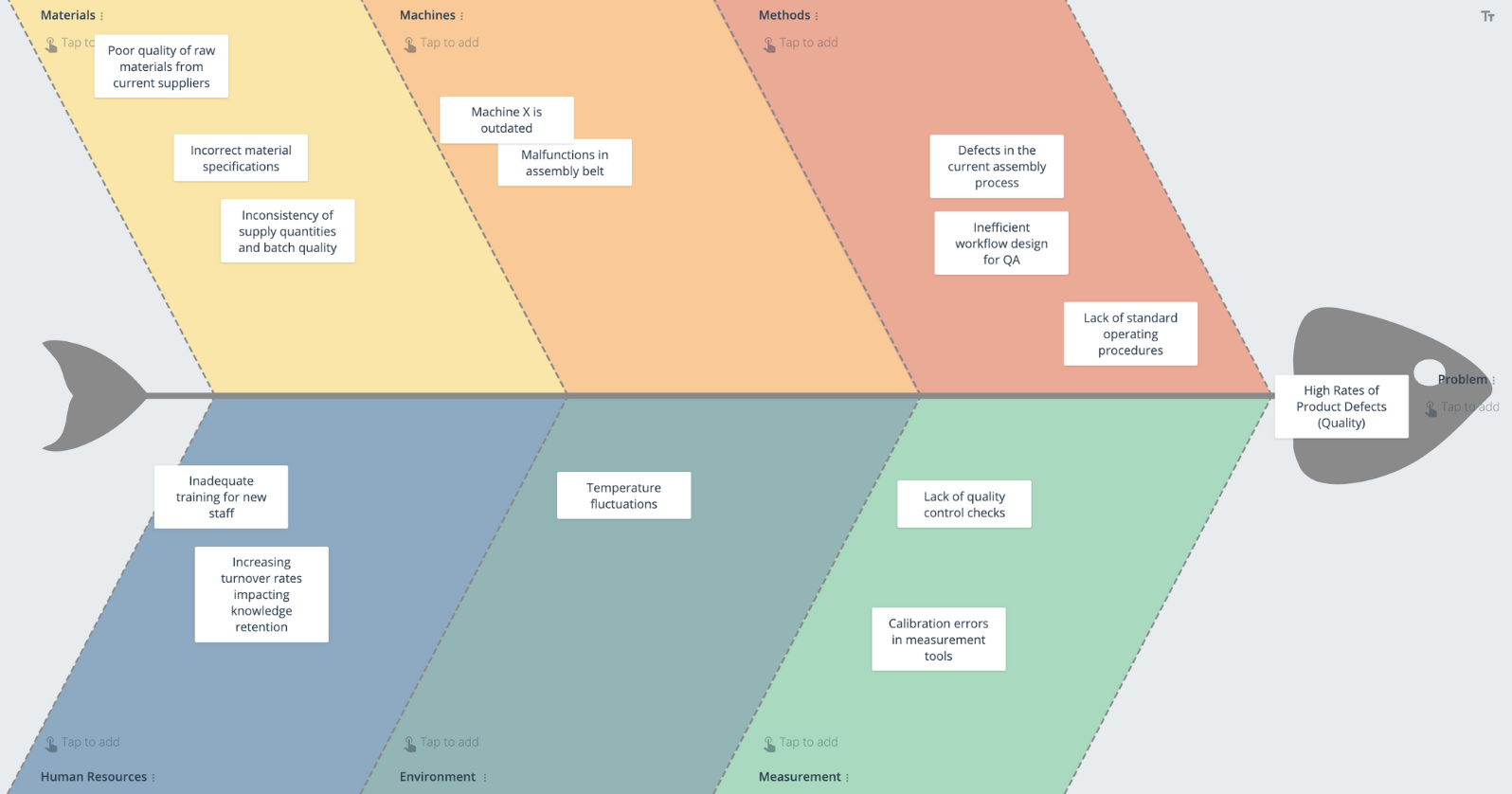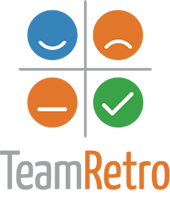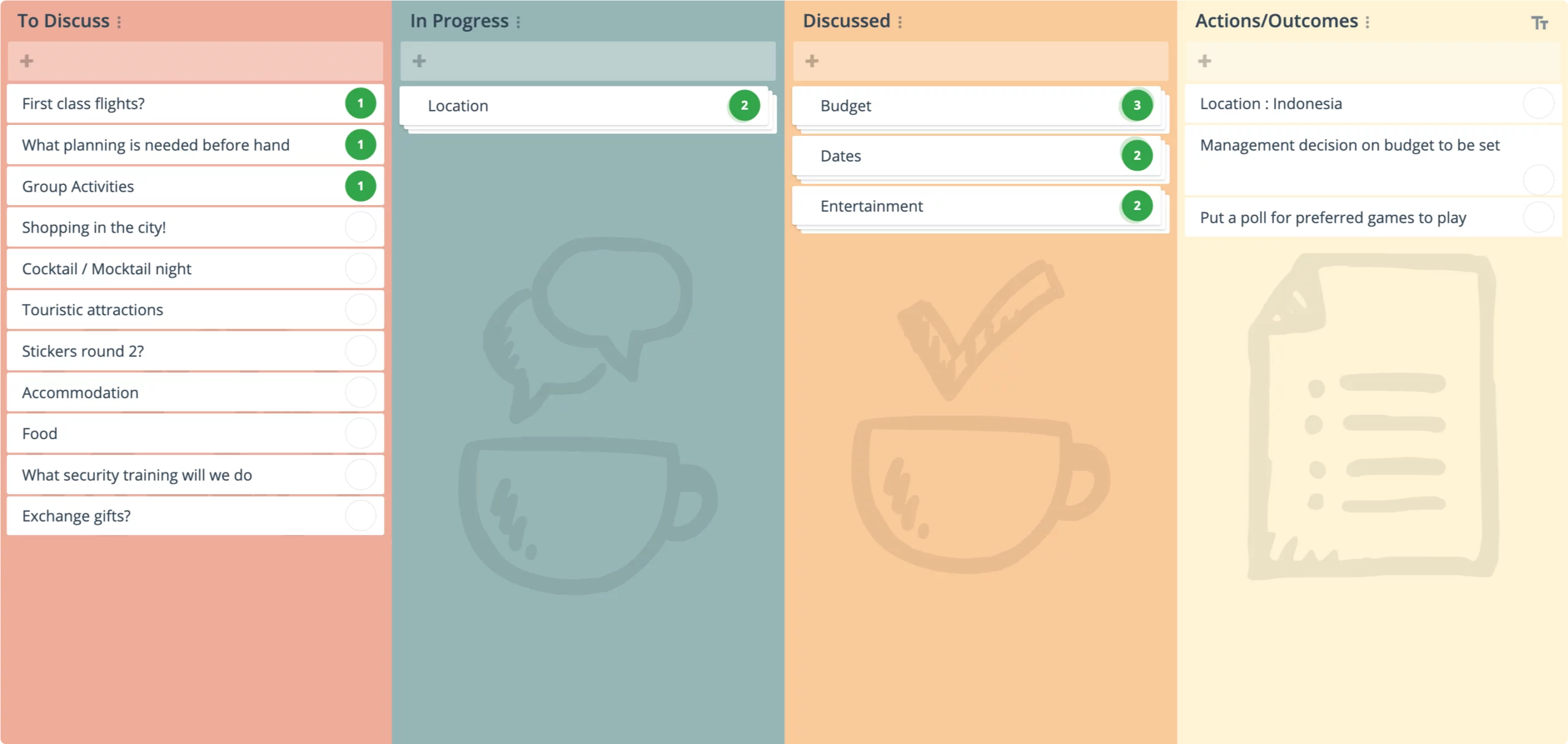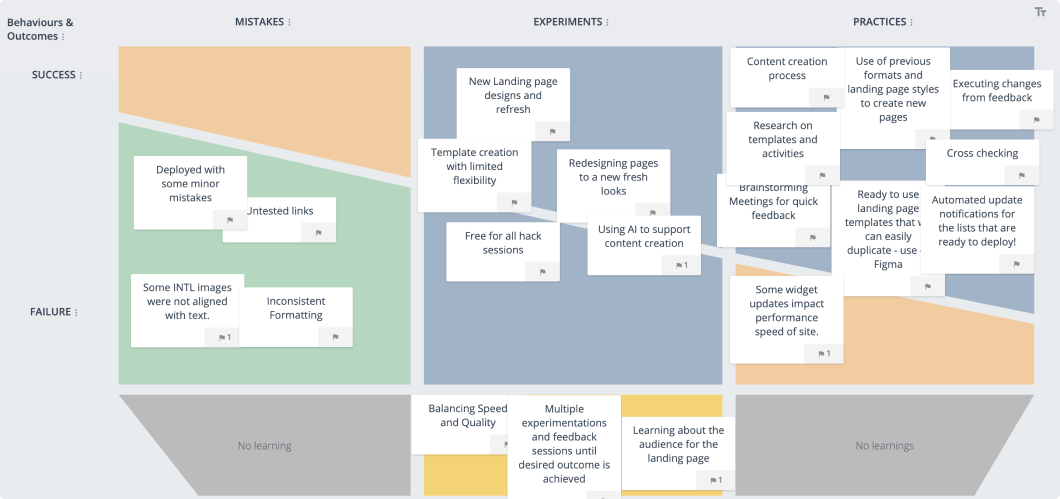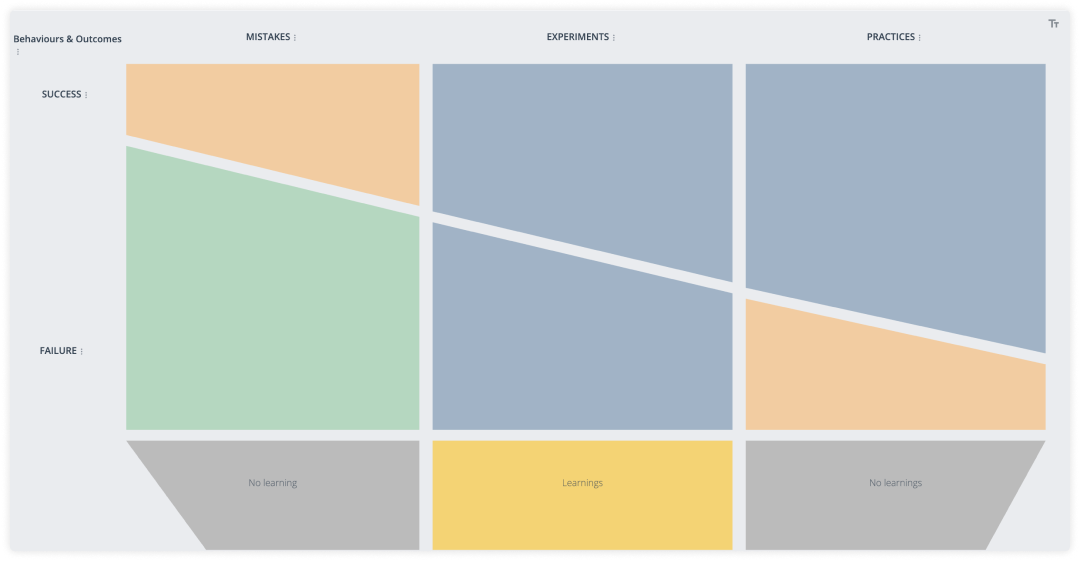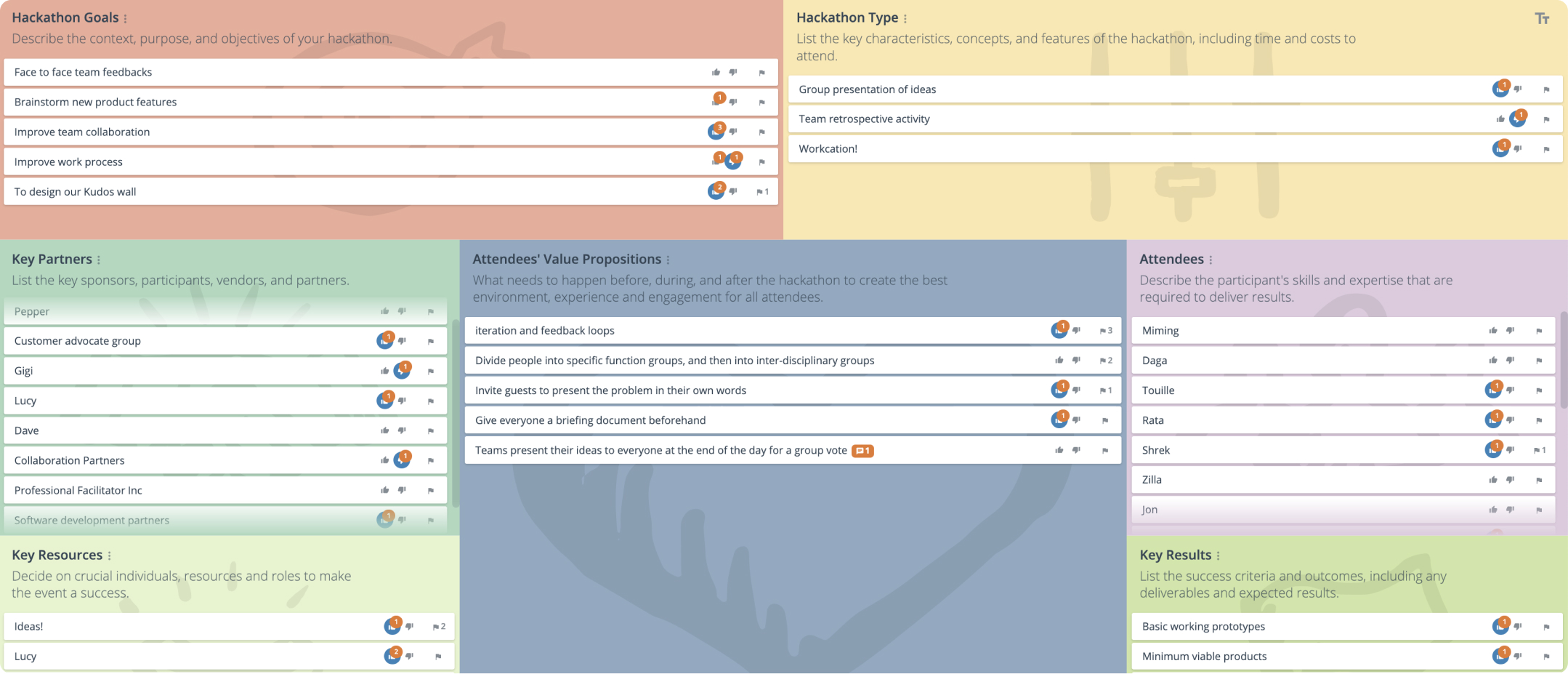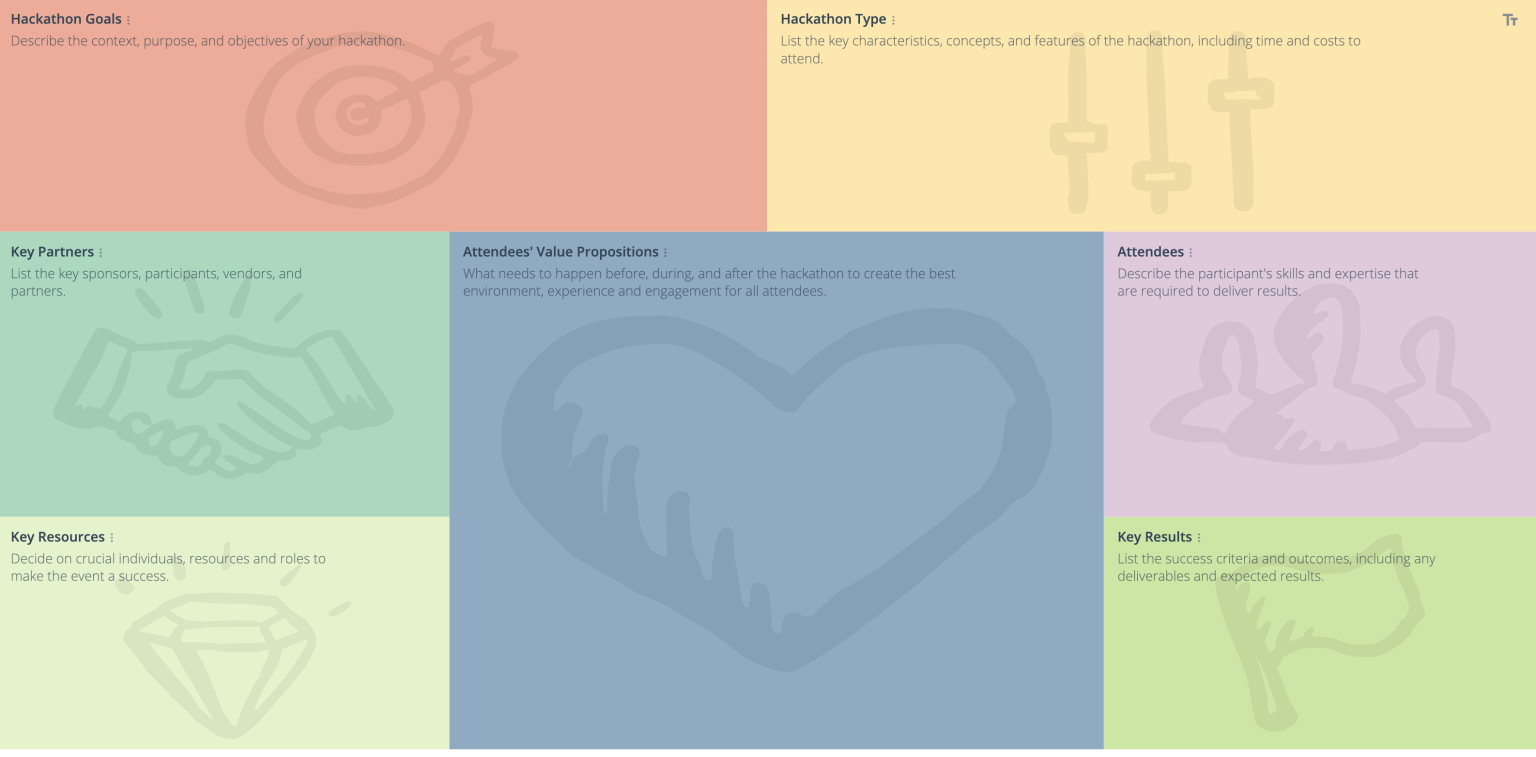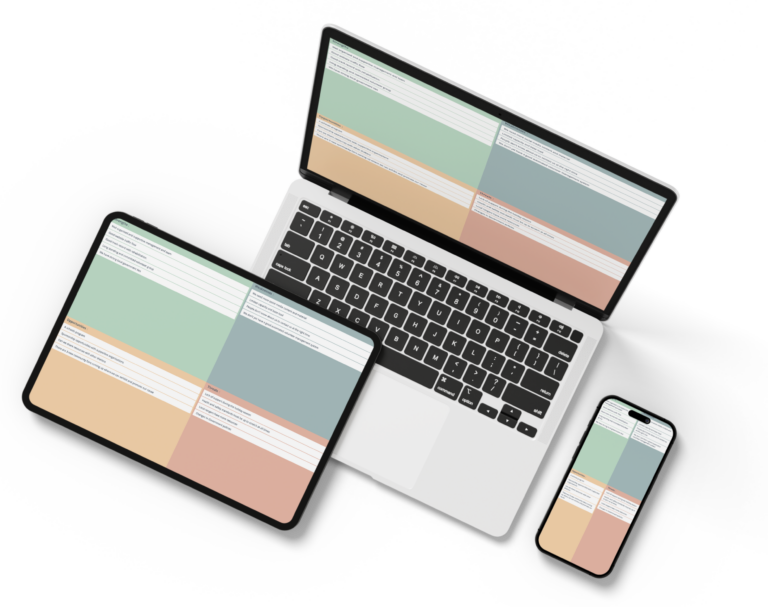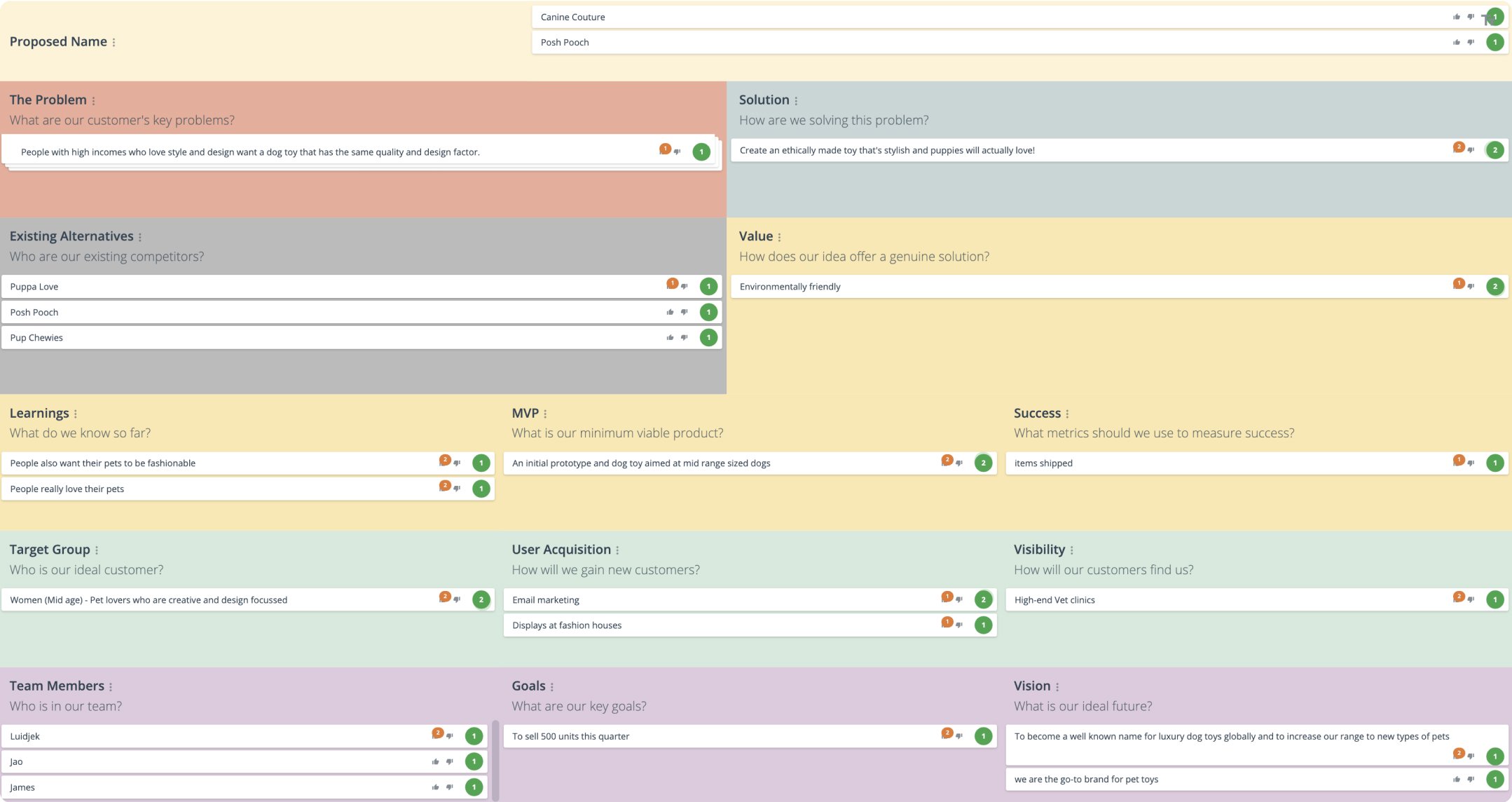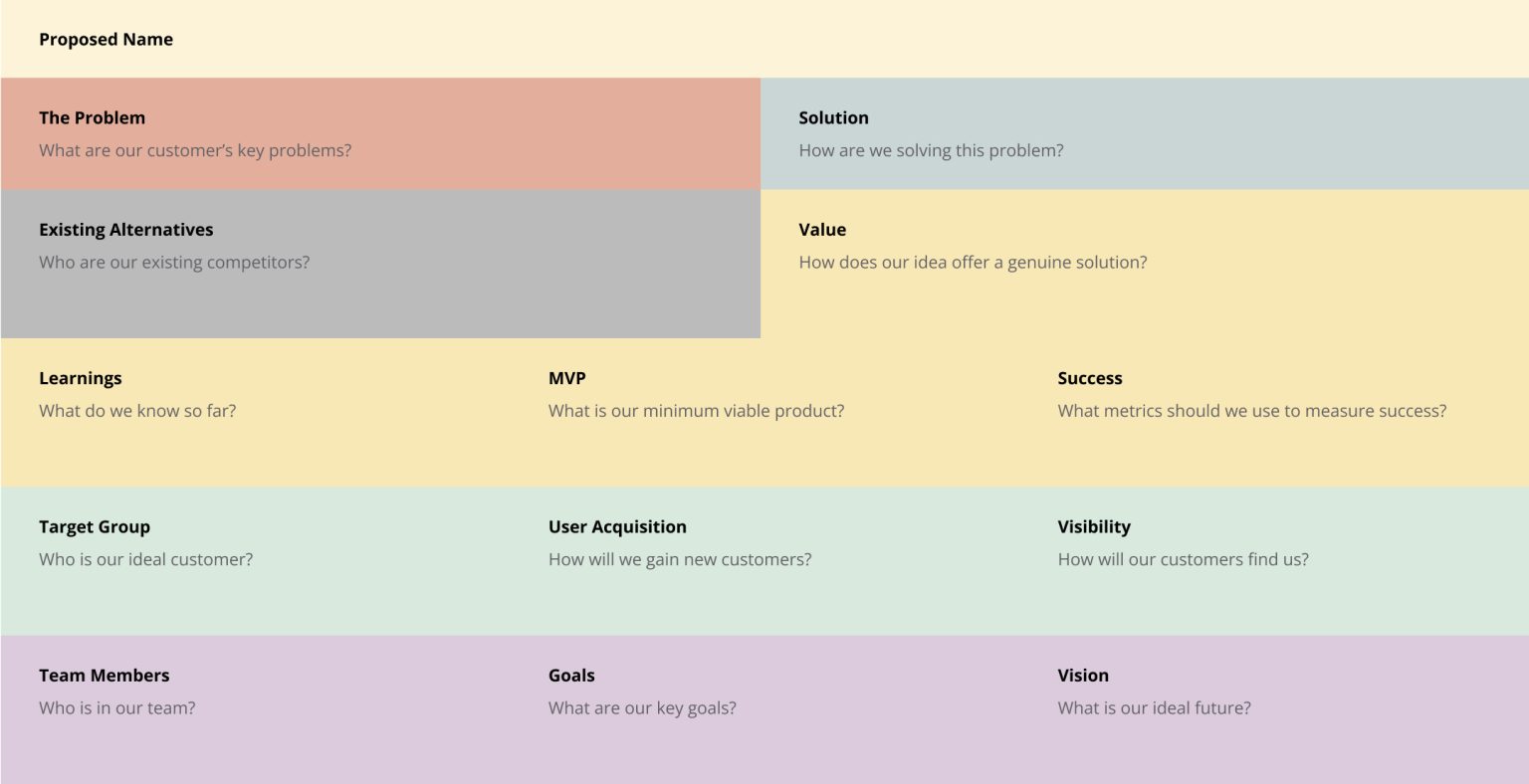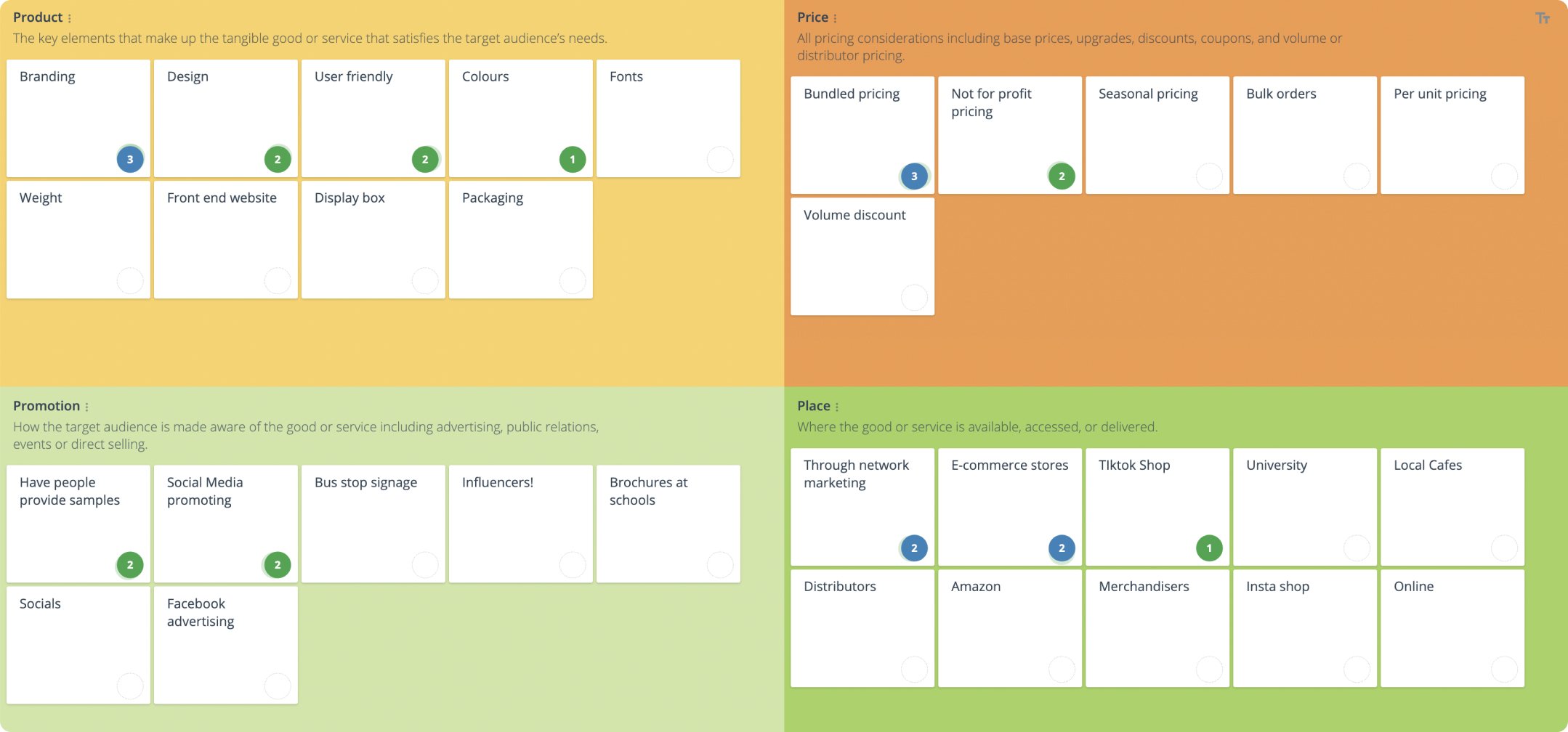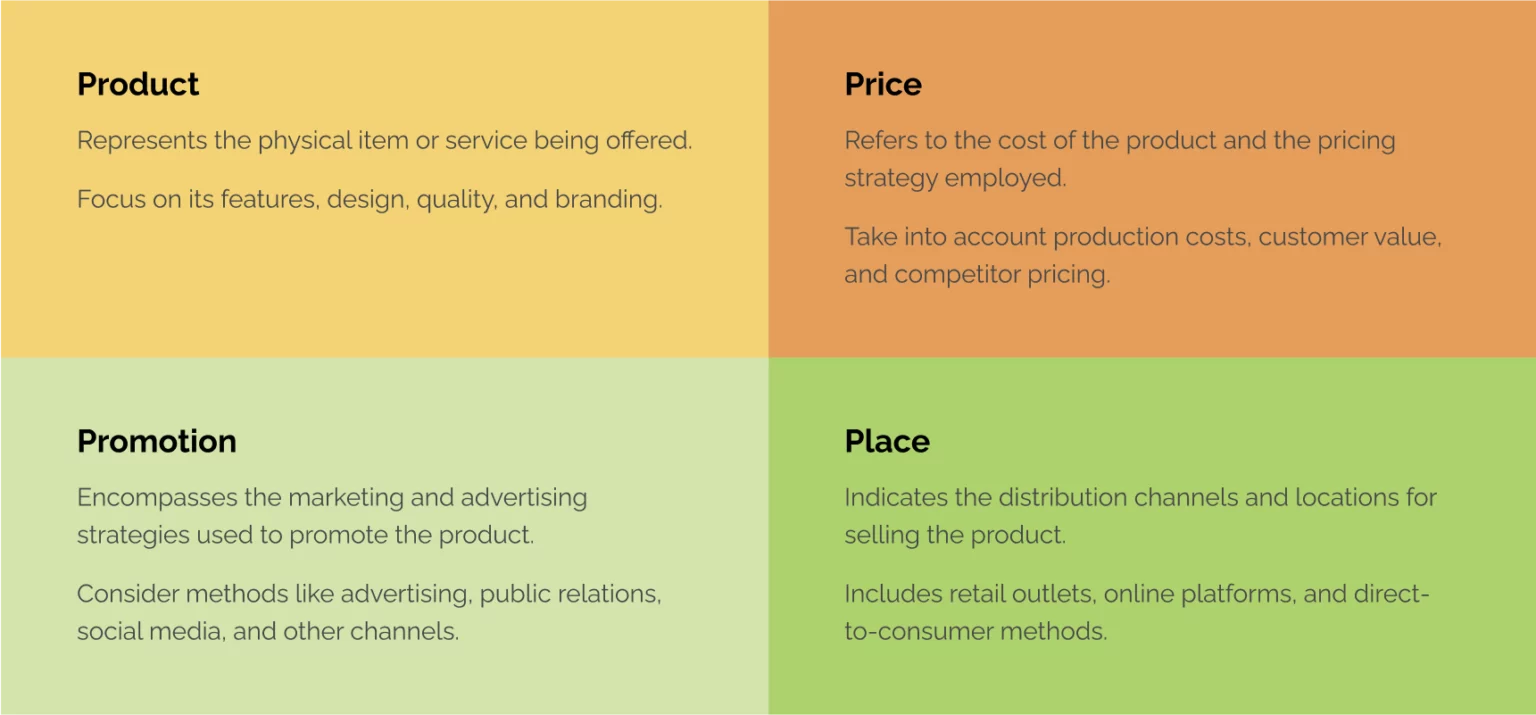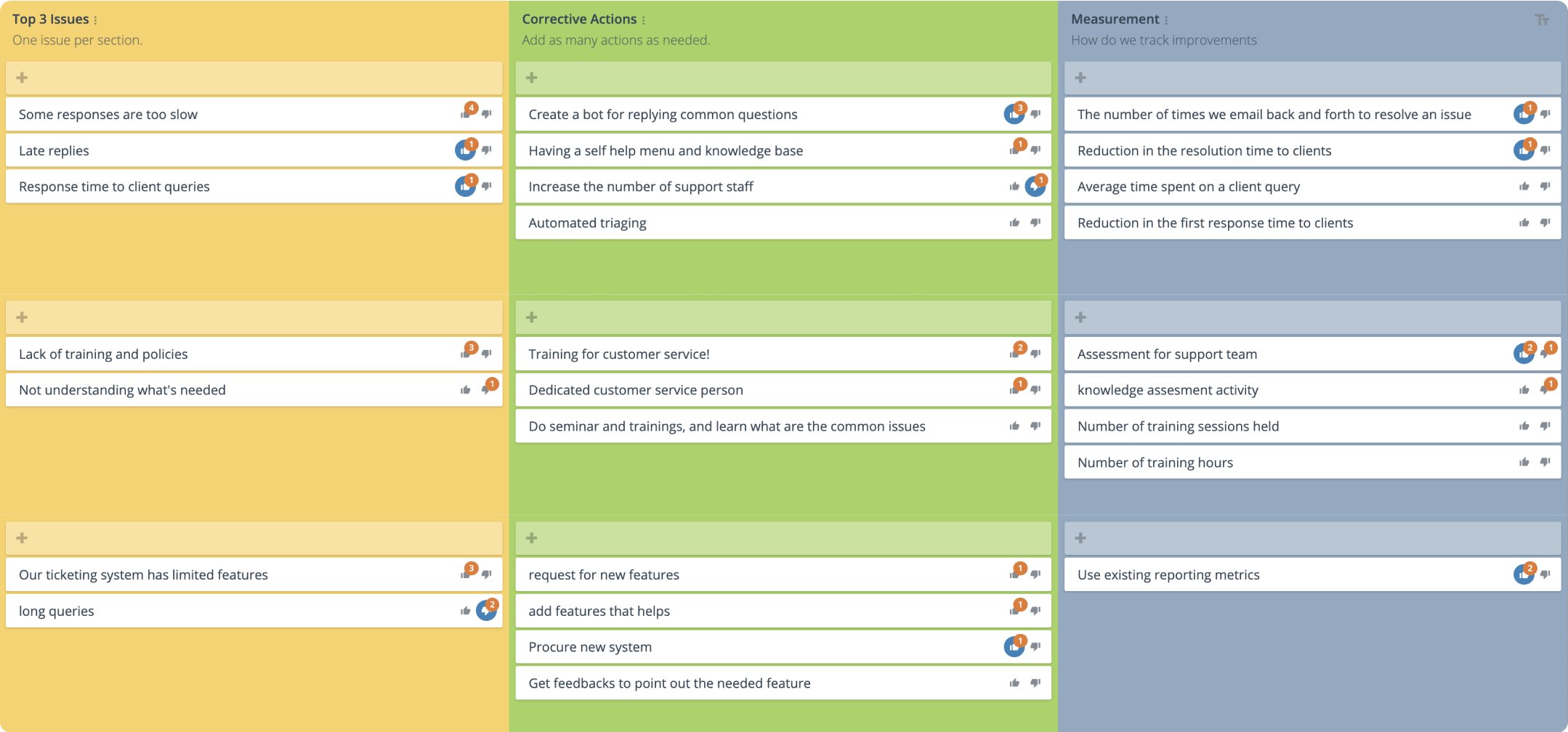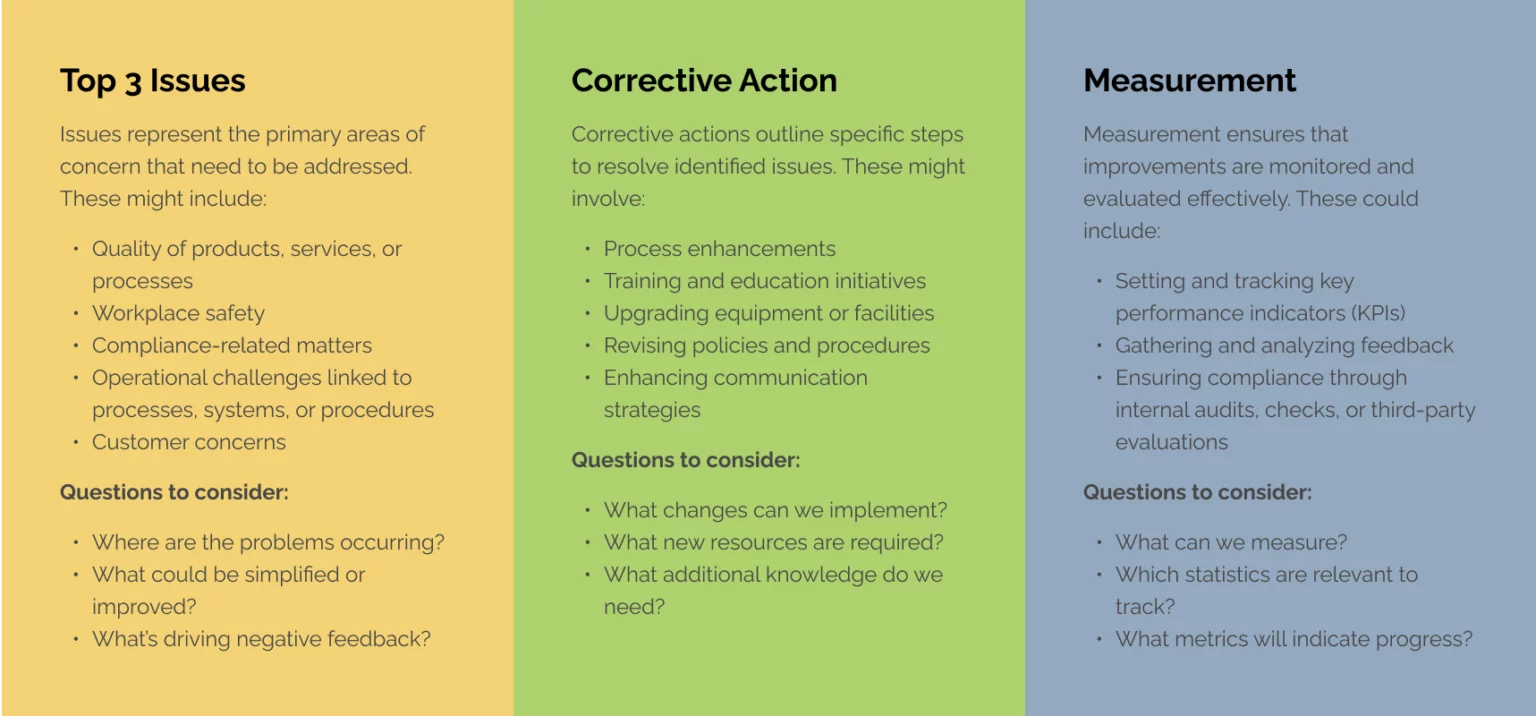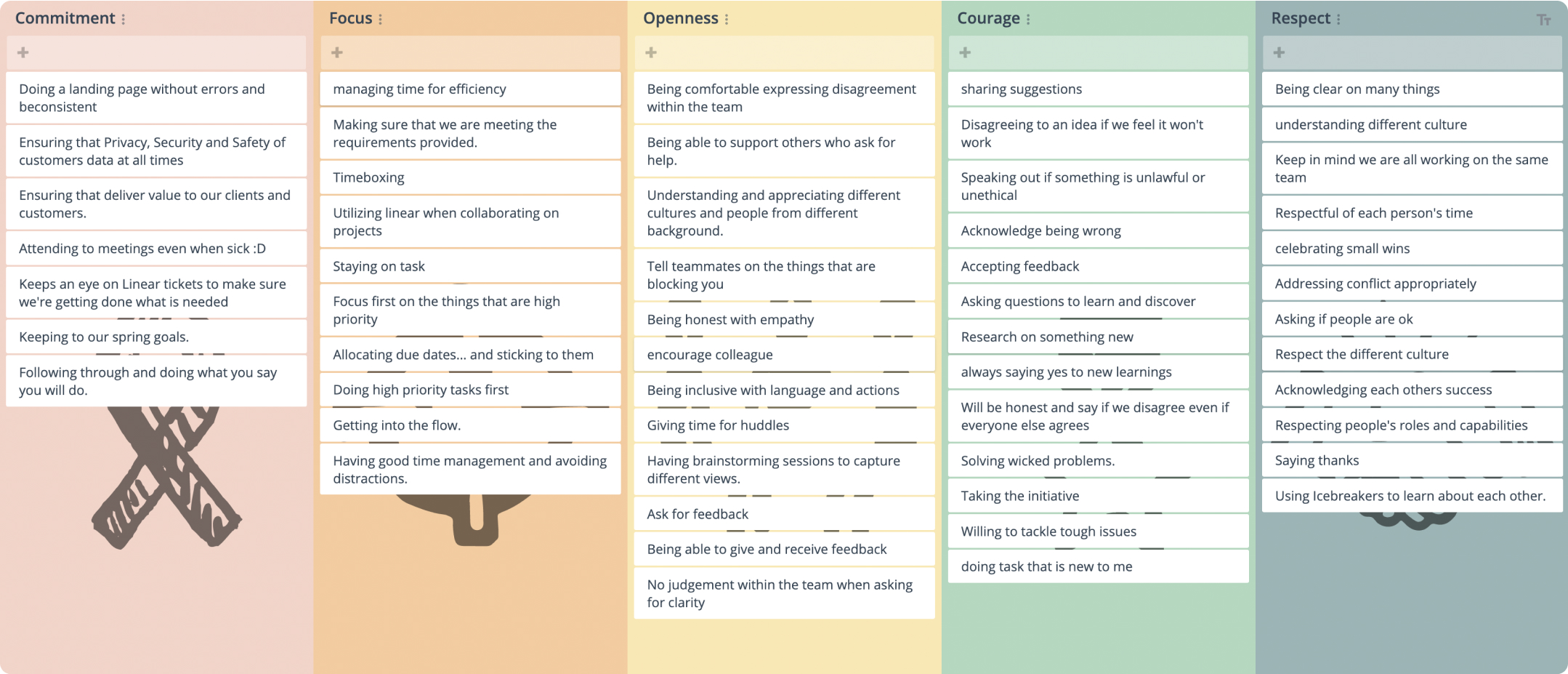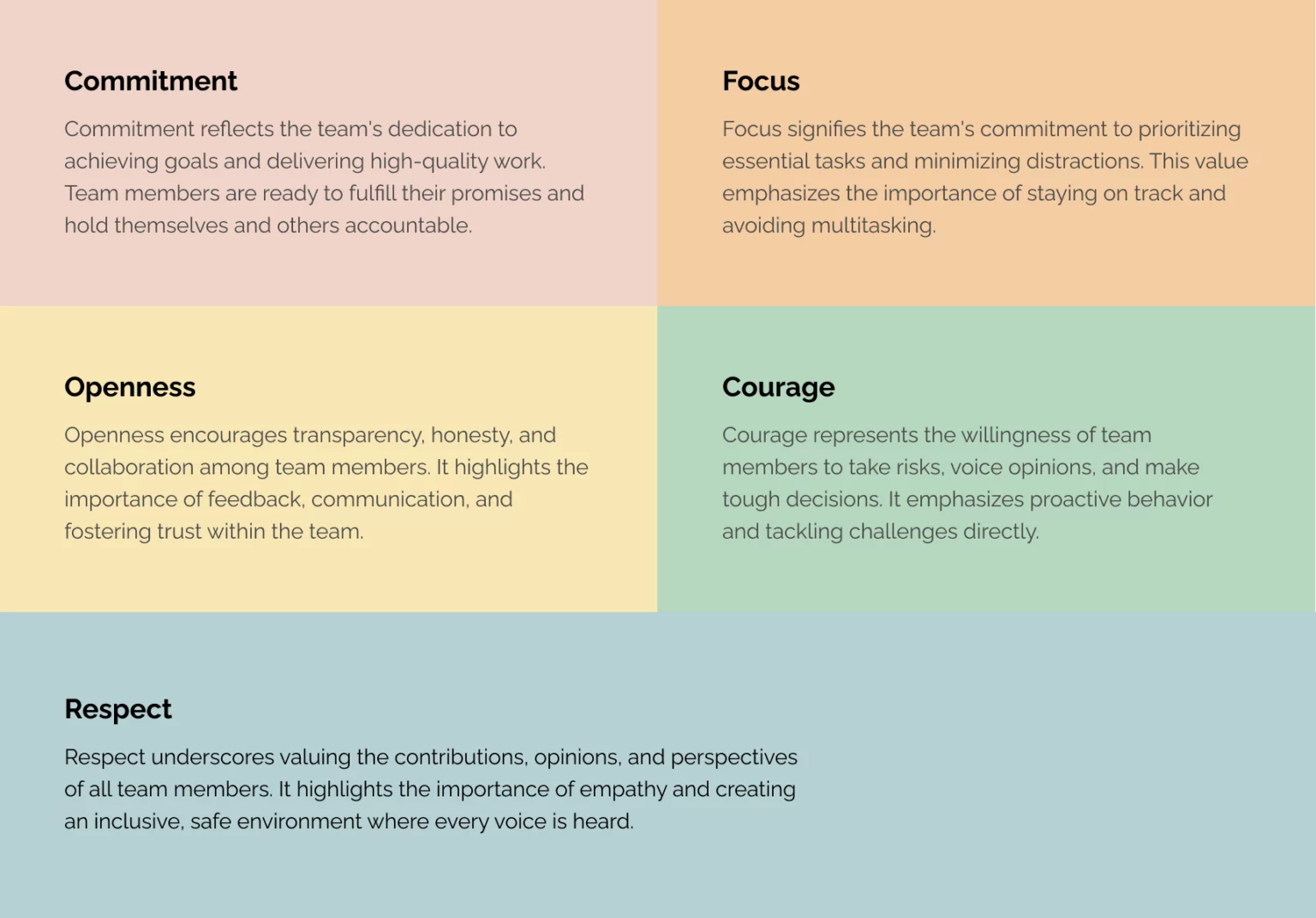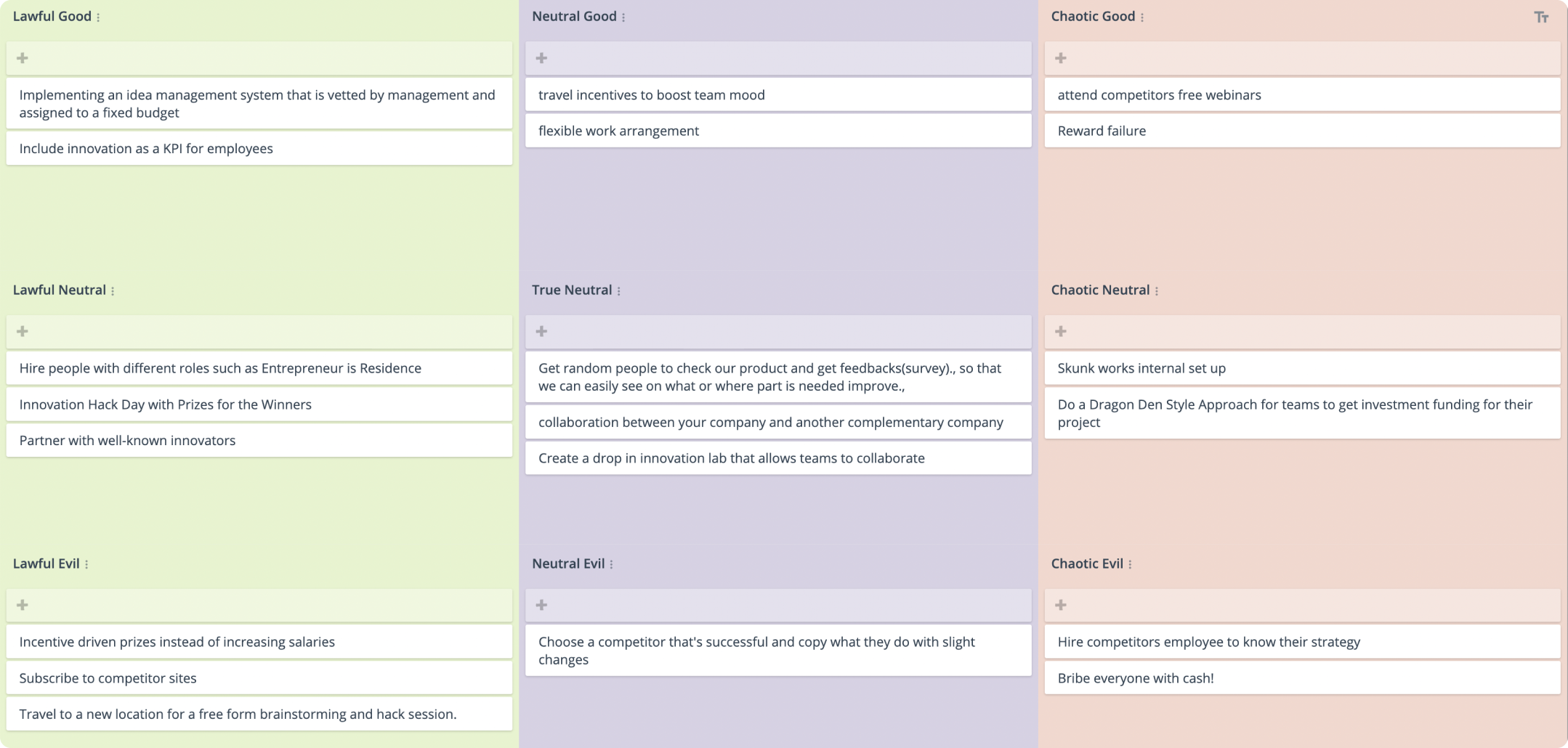What is a Fishbone (Ishikawa) Root Cause Analysis?
The Fishbone (Ishikawa) Root Cause Analysis is a collaborative tool used to systematically identify and analyze the potential causes of a specific problem or challenge.
Named for its resemblance to a fish’s skeleton, this diagram visually organizes potential causes into categories to pinpoint the root issue more effectively.
The key components of the Fishbone Root Cause Analysis are:
The Fish Head: This is the main problem or issue you want the group to analyze.
The Spine: These are the main categories or broad areas where causes might lie. These can either be created as a standard in advance, or determined when different issues are raised. They can then be reorganized under each bone to determine the category.
The Bones : These are the specific issues that are creating the problem that need to be addressed.
Why do a Fishbone (Ishikawa) Root Cause Analysis?
- It provides a structured yet creative way to identify the root causes of a problem.
- Teams can visually break down complex problems into manageable and actionable pieces.
- It encourages diverse perspectives and input, ensuring that all potential factors are considered.
- With an in-built timer, discussions remain focused and time-efficient.
- Rather than addressing the symptoms of an issue or challenge, you can drill down towards a cause. This means that the action you take is more targeted and effective.
Tips for Facilitating an Effective Fishbone Root Cause Analysis
- Clearly define the problem or challenge you want the team to analyse. This ensures focus and avoids irrelevant discussions.
- Enable anonymity if possible, to encourage open and honest contributions, especially for sensitive or challenging topics.
- Guide the discussion to dig deeper into why a particular issue is occurring, rather than just identifying surface-level symptoms. Use the 5 Why approach.
- If multiple causes are identified, have participants vote to prioritize and figure out which root causes to address first.
- For each identified root cause, assign actionable solutions to prevent or mitigate the issue in the future.
Who should do an Fishbone (Ishikawa) Root Cause Analysis?
A Fishbone Root Cause Analysis is ideal for teams looking to solve complex problems collaboratively such as:
- Quality assurance and control teams identifying and addressing defects or errors in products or processes.
- Cross functional teams that have a shared problem.
- Agile teams aiming to resolve blockers and bottlenecks.
- Operational teams looking to improve operational efficiency and minimizing downtime.
- Customer service teams trying to identify the root causes of customer complaints or low satisfaction scores.
- Product development teams enhancing product design and resolving issues for new product launches.
- Health and safety teams investigating workplace accidents or health hazards.
- IT security teams troubleshooting system failures or security vulnerabilities.
- Education teams looking for gaps in training programs or student performance.
- Health care teams addressing patient care issues or inefficiencies in medical procedures.
Common Fishbone Analysis Formats
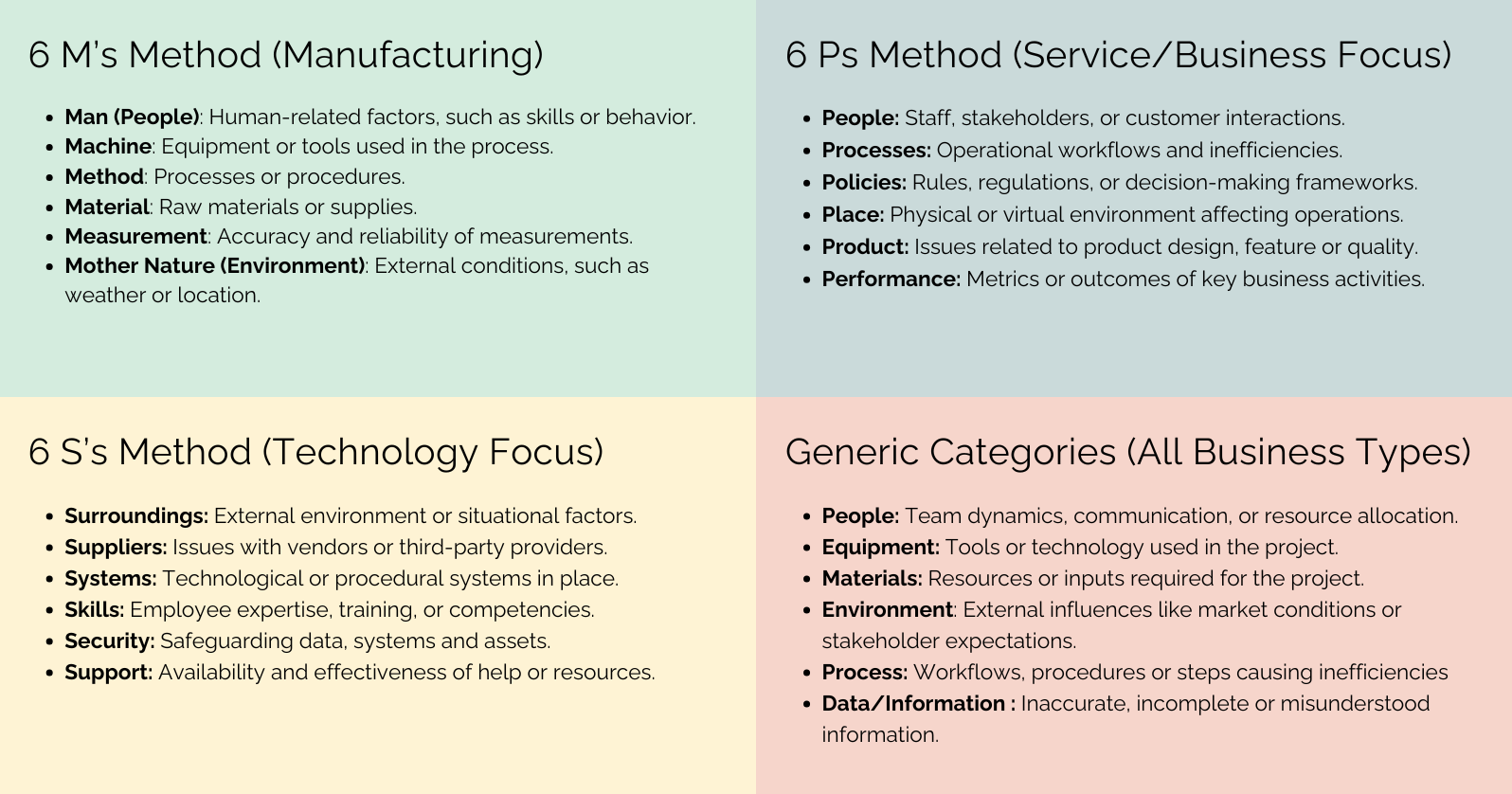
How to Run a Fishbone (Ishikawa) Root Cause Analysis
Firstly, identify and describe the key issue that you want the team to consider. This now becomes the head of the Fish.
If you have already selected a common format (As explained above) or have created your own, add these categories to the Spine of the Fish. Otherwise, you can simply ask participants to brainstorm freely on any section, and then sort and categorize these later.
Describe the problem to the team and ensure that they understand the issue and have asked any questions they need to clarify.
Have the team brainstorm as many potential causes (one cause per card) and add them to the Ishikawa Diagram. Once the time has passed or there are clear causes identified, have the group review and categorize them as needed. You can use votes to see where people believe the root causes lie.
Finally, based on the identified root cause ( or root causes) ask the group to create potential action items that can be put in place to address each cause. Discuss each action in turn and then assign importance and ownership. You have now completed a root cause analysis.

Scene Setting
Clearly define the problem to be addressed. Add categories if desired.

Brainstorm
List causes on each card along the spine.

Group
Discuss and group any common causes for each category.

Vote
Have the team vote on the root causes of the problem that need to be addressed.

Action Plan
Identify actions for each cause. Assign owners and due dates.

Share
Share the outcomes of the session, including the action plan.
Instruction: Begin by clearly defining the problem and ensuring everyone understands it. Optionally, add categories to organize potential causes.
Example: Define the problem as “High product defect rates in Q4” and set categories such as People, Process, Materials, Machines, Environment, and Measurement.
Facilitation Tips:
- Display the problem visibly on the GroupMap board.
- Ask clarifying questions: “What specific defects are we seeing? Are they concentrated in one area?”
- Prepopulate broad categories or allow the team to suggest categories relevant to their context.
Instruction: Have the team list potential causes on cards along the diagram’s spine. Each card should contain one cause.
Example:
- People: “Lack of training,” “High turnover.”
- Process: “No standard quality checks,” “Manual inspection errors.”
Facilitation Tips:
- Encourage rapid idea generation and defer judgment on ideas at this stage.
- Use GroupMap’s anonymous mode to foster openness and creativity.
- Time-box the activity to keep participants focused.
Instruction: Discuss and organize causes under the most appropriate categories. Combine or rephrase causes that overlap or are similar.
Example:
- Combine “Lack of training” and “High turnover” into “Inconsistent training due to turnover” under People.
- Group “No standard quality checks” and “Inspection errors” under Process.
Facilitation Tips:
- Encourage discussion: “Does this cause fit better in another category?” or “Are these two causes describing the same issue?”
- Use GroupMap’s drag-and-drop functionality to group and organize causes efficiently.
- Keep categories flexible; adjust if they don’t make sense to the team.
Instruction: Have participants vote on the most critical root causes. Focus on causes that the team can address and where actions can be defined.
Example:
The team might vote for:
- Root Cause: “Inconsistent supplier quality” under Materials.
- Root Cause: “Outdated equipment causing production errors” under Machines.
Facilitation Tips:
- Use GroupMap’s voting feature to ensure fairness and transparency.
- Allow participants to explain their votes: “Why do you believe this is the most significant root cause?”
- Limit the number of votes per person to prioritize key issues (e.g., 2–3 votes per participant).
Instruction: For each root cause, identify specific, actionable steps. Assign owners and set due dates for each action.
Example:
- Cause: “Inconsistent supplier quality.”
- Action: Conduct supplier audits and renegotiate contracts with stricter quality requirements.
Facilitation Tips:
- Ensure actions are SMART (Specific, Measurable, Achievable, Relevant, Time-bound).
- Discuss resource availability for each action item: “Do we have the budget, time, or skills needed to implement this?”
- Use GroupMap’s notes or comment features to add context to each action.
Instruction: Share the outcomes, including the fishbone diagram, identified root causes, and the action plan.
Example:
- Final diagram with categorized and grouped causes.
- A prioritized list of root causes.
- The action plan with owners and deadlines.
- Use GroupMap’s export feature to create a summary document or presentation.
Facilitation Tips:
- Schedule a follow-up meeting or share progress updates via email or the team’s communication platform.
- Highlight how the analysis will contribute to reducing defect rates and improving overall performance.
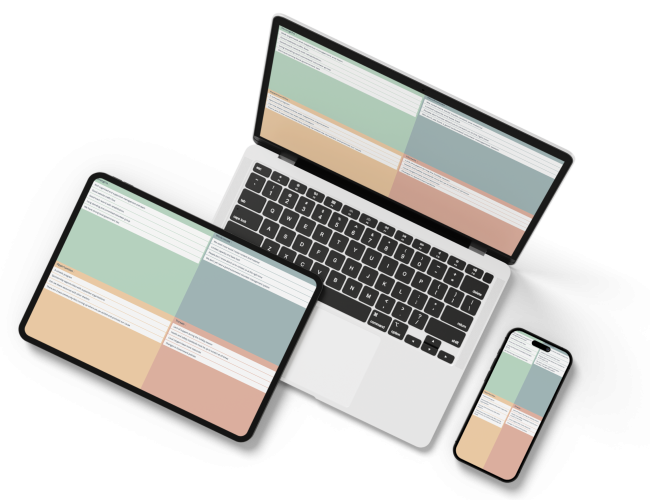
Save Effort, Time and Money with GroupMap
GroupMap offers more than just an online digital whiteboard—it’s innovative platform is designed to enhance the quality of your team’s decisions. With features that prevent bias and make facilitation seamless, GroupMap ensures no single voice dominates and ensures productive, inclusive conversations.
Its intuitive interface is easy for anyone to use, and its scalable design supports small teams and large groups whether they are face to face or around the globe. Customisable templates and workflows keep discussions focused on objectives, helping you drive actionable outcomes each and every time.
Create your first map and invite people in to start sharing their thoughts NOW.
Experience the power of GroupMap with our FREE 14 day trial.
Your free trial gives you access to all of our features, no credit card required.
